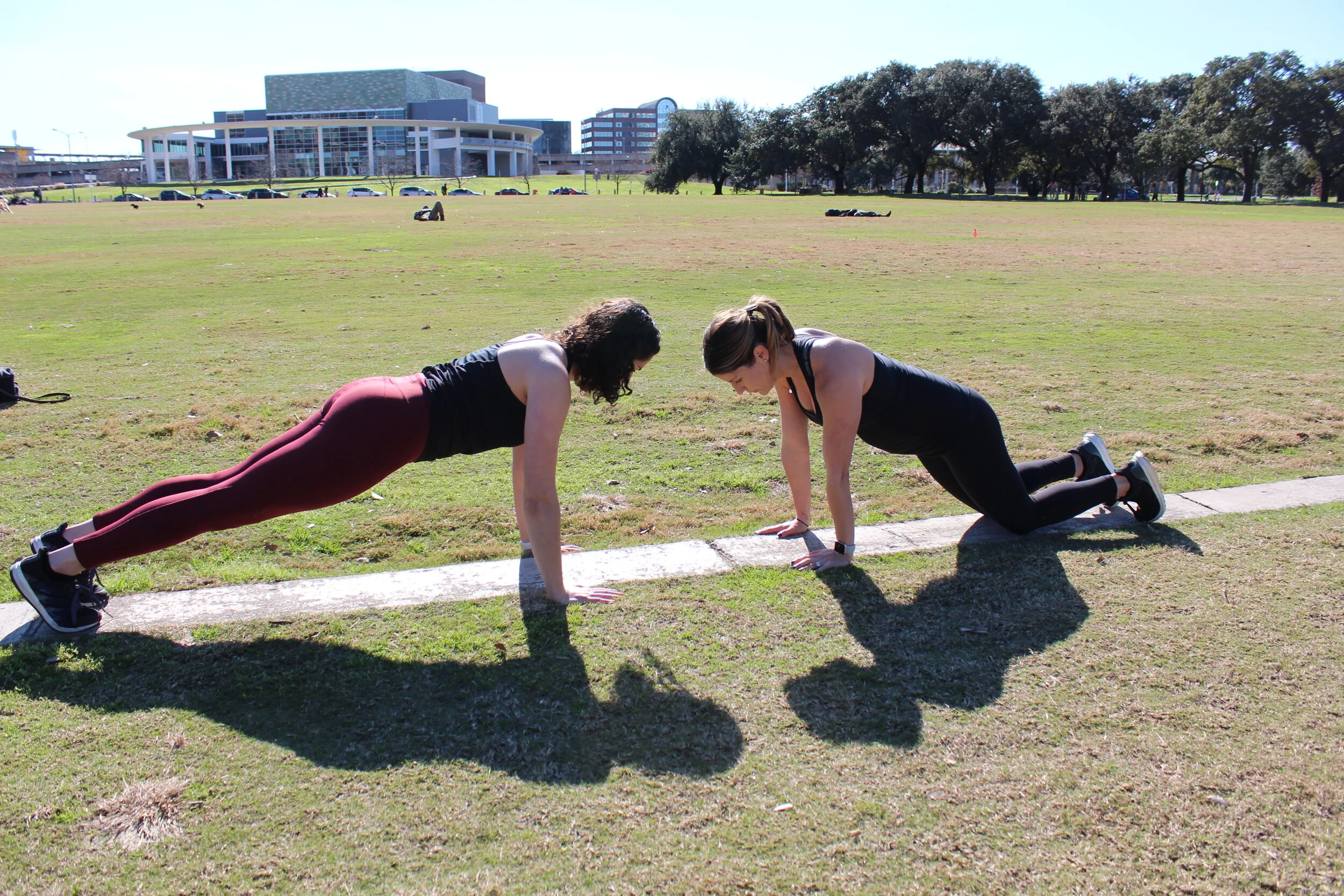What exercise is right or wrong for prolapse?
First, let’s define a prolapse and talk about how that happens.
A prolapse occurs when one or more of your pelvic organs fall into the vaginal canal. This can create vaginal heaviness, urinary leakage, incomplete bladder emptying, constipation or back pain. Factors that increase the likelihood of developing prolapse are multiple pregnancies, vaginal deliveries, history of constipation and straining, history of chronic coughing as well as genetics. Basically, anything that increases intra-abdominal pressure downward for a prolonged period of time can stretch out the ligaments that support the pelvic organs, causing them to fall.
It's important to note that prolapse is extremely common. Some estimates range as high as 75% of people following vaginal birth have a prolapse.
Historically we have told people that they they should avoid running, jumping and squatting as these things can increase the pressure and potentially worsen the prolapse. But the truth is, while these exercises do increase the intra-abdominal pressure, some people can tolerate them without worsening their symptoms.
The important thing is that we individualize this idea of exercise restriction to the specific person. So if one person with a prolapse can squat without symptoms, but can only run 10 minutes without vaginal heaviness and urinary leakage, then they can squat for exercise but might want to consider modifying their running work out so that they do not have symptoms. This could be running for less than 10 minutes at a time or decreasing the speed, changing the incline, or doing a combination of running/walking. The next person might be able to run no problem but has heaviness while doing jumping jacks. That means running may be totally fine for them, but jumping jacks may need to be modified.
We need to stop making blanket statements that all people with prolapse can’t do certain exercises, because it’s not true and creates a fear of movement which can be just as detrimental as the prolapse itself. Instead, we can empower people to move within their own limitations and educated them that with proper training, their symptoms will improve and they can likely return to prior levels of activity. (Because that is the truth!) The modifications we talked about previously aren't forever. Modifications may be a short term necessity to allow your body to regain strength and control.
At this point, I hope you’re pumping your fists in the air, screaming “YES I CAN!”, but maybe you’re not because you’re wondering.. well how do I do this? What is “proper training?”
"Proper training" includes pressure management through breath, strengthening the pelvic floor, abdominal and hip stabilizing muscles, working on tension throughout those same muscles if needed and training specific to the activities that create symptoms. Let's break each of these points down.
Pressure management is about breathing patterns during movement. One example is exhaling during exertion while lifting. Not just lifting weights, but also when lifting your kids or your groceries. Exhaling will cue your pelvic floor to lift just slightly, which will aid in providing support to your pelvic organs.
Strengthening the pelvic floor muscles will help provide support to the pelvic organs and will decrease the symptoms of a prolapse. In turn, strengthening the abdominal and hip muscles will help provide support to the pelvic floor muscles. It is important to note, however, that muscles not only need to be strong but also flexible. If you have really tense muscles, they will not be able to go through the full range of motion, limiting their ability to be as strong as they could be. Additionally, we need good control of the muscles for them to function well. Controlling the muscle means that before you lift something heavy, you are able to contract your pelvic floor to make sure you are providing the support needed to the pelvic organs. Control means your brain knows how to use these muscles and knows how to get them to turn on when you need them to.
Lastly, let's talk progressive training. Progressive training takes an approach specific to the exercise that gives you symptoms. This can mean adding resistance to your exercise program, training single limb balance for a runner, working on impact training, etc. While we focus on progressive training, we monitor your symptoms and modify exercises as needed.
Though there are some similarities from person to person, individualized programing is where we get the best results. A pelvic floor physical therapist can evaluate your body and lifestyle to help create an approach tailored to your needs. We can create a plan that is specific to you as a person because that’s how someone with a prolapse should be treated.
Do you think you have a prolapse or are you wondering what you can do about it? Contact us for a free 15 minute phone consultation.
Learn more about the author, Jessica Chastka, PT, DPT, WCS.


